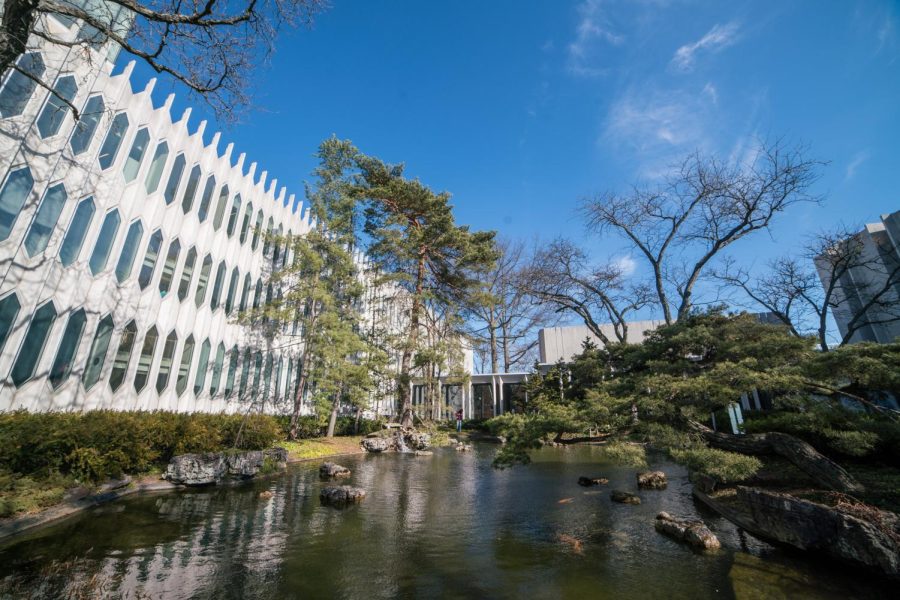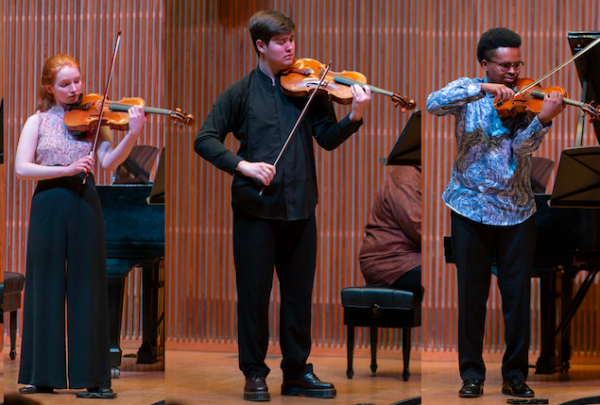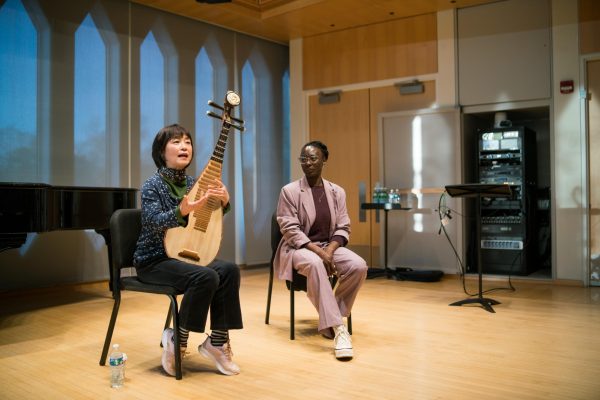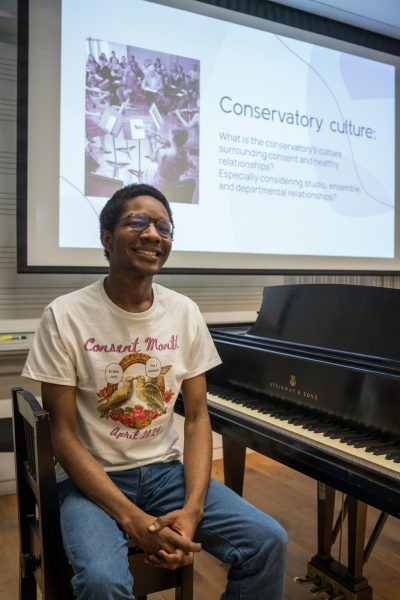Koi Pond Has Long Provided Sanctuary, Serenity to Conservatory
The Conservatory koi pond lies beside Bibbins Hall.
The Conservatory reflecting pool, or koi pond as it is known by students today, is a scenic corner of Oberlin’s campus that has long been appreciated for its beauty. A key feature of this pond is not only its tranquility and natural appeal, but also its many multi-colored koi fish.
Originally constructed in 1964, along with the new Conservatory complexes including Bibbins Hall, Warner Hall, the Conservatory Central Unit, and Robertson Hall, by Minoru Yamasaki, who famously designed the World Trade Center, the reflecting pool and accompanying Japanese ornamental garden have served generations of students as an entryway into the heart of the Conservatory.
The new Conservatory buildings were created with future generations in mind. Dewey A. Ganzel Jr., associate professor of English at the time, expressed this sentiment in a music dedication program.
“What impresses me most about the buildings of the New Conservatory of Music is their human scale,” Ganzel wrote. “They suggest that life as it will be lived here will be complex but not hopelessly so — that it will be uniform but nevertheless have pattern.”
Given its location, encircled by Conservatory buildings and beside the walkway into the Conservatory Central Unit, the koi pond has become an important part of Conservatory culture. On warm days, you may see students practicing their instruments by the pond, or enjoying a meal on the stone benches that face the water. The Conservatory Lounge’s floor to ceiling glass windows keep the pond in view to students who often sit, chat, and do work on the Lounge’s many tables and couches. The pond is also a popular spot to take photos, whether to be featured on recital posters or to announce one’s commitment to the Conservatory on Instagram.
Double-degree second-year Lily Bronson reflected on the ways in which the koi pond provides a sense of the natural world for Conservatory students.
“We end up spending a lot of time inside practice rooms and classes, but even the fact that our classrooms have windows that look out onto the pond gives us a taste of the natural world,” Bronson said.
Bronson’s comments almost exactly replicate the sentiment found in the Oberlin Alumni Magazine inaugurating the opening of the new Conservatory buildings in 1965.
“The ever-present windows, looking out on grass, on sky, on trees, on changing colors in the pool, remind us always of man’s need to be a part of nature,” Norman Lloyd, Dean of the Conservatory of Music at the time of the new Conservatory’s opening, said.
While the reflecting pool has existed since the new Conservatory buildings’ construction, there weren’t always koi fish in the koi pond. In 1986, the pond was drained indefinitely due to a drain failure and the subsequent leakage of pond water into the TIMARA studios located in the basement of Bibbins Hall. For 12 years, the pond remained empty until the Oberlin grounds crew resealed the drain and installed overflow piping and liner.
It wasn’t until this renovation in 1998 as well as an aesthetic update to the Japanese garden itself that the pond finally gained its fish. Koi fish are a type of domesticated, vibrantly colored carp that are traditionally found in Japanese gardens as a decorative element. Aside from their beauty, koi symbolize longevity, as they are known to live for over 25 years. In addition to the koi, the restoration also brought yew bushes and decorative boulders to the banks of the pond.
“When finished, [then Oberlin grounds manager Dennis] Greive said the garden will resemble an ‘outdoor room’ which can be used as a classroom,” an Oberlin News-Tribune article published on Oct. 6, 1998 reads. “It makes it a more peaceful and useable [sic] space, and a piece of art,” Greive said.
Some students have come to gain a keener interest in the koi. Double-degree fourth-year Francis Wogaman has gained recognition for feeding the koi during the warmer months. He feeds them Omega One pellets and uses the small size so that all the fish, including the babies, can enjoy them. He cares about the fish and worries about their wellbeing.
“I never saw anyone feeding them aside from random Cheerios and bread and stuff, which is not good for them,” Wogaman said.
The koi pond holds decades of Conservatory history, continuing to provide a peaceful sanctuary that is central to the Conservatory experience.





